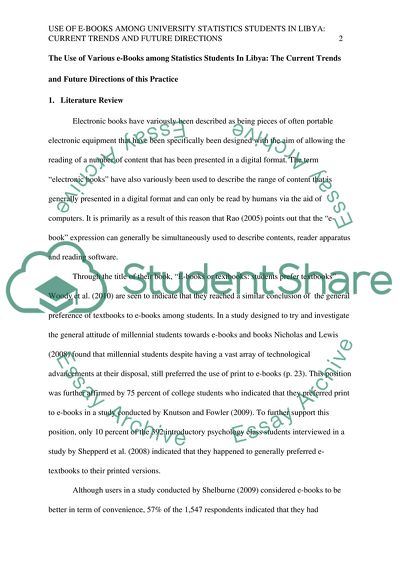Cite this document
(The Use of Various E-Books among Statistics Students In Libya Thesis Proposal Example | Topics and Well Written Essays - 2000 words, n.d.)
The Use of Various E-Books among Statistics Students In Libya Thesis Proposal Example | Topics and Well Written Essays - 2000 words. https://studentshare.org/information-technology/1802452-using-electronic-book-in-high-education
The Use of Various E-Books among Statistics Students In Libya Thesis Proposal Example | Topics and Well Written Essays - 2000 words. https://studentshare.org/information-technology/1802452-using-electronic-book-in-high-education
(The Use of Various E-Books Among Statistics Students In Libya Thesis Proposal Example | Topics and Well Written Essays - 2000 Words)
The Use of Various E-Books Among Statistics Students In Libya Thesis Proposal Example | Topics and Well Written Essays - 2000 Words. https://studentshare.org/information-technology/1802452-using-electronic-book-in-high-education.
The Use of Various E-Books Among Statistics Students In Libya Thesis Proposal Example | Topics and Well Written Essays - 2000 Words. https://studentshare.org/information-technology/1802452-using-electronic-book-in-high-education.
“The Use of Various E-Books Among Statistics Students In Libya Thesis Proposal Example | Topics and Well Written Essays - 2000 Words”. https://studentshare.org/information-technology/1802452-using-electronic-book-in-high-education.


